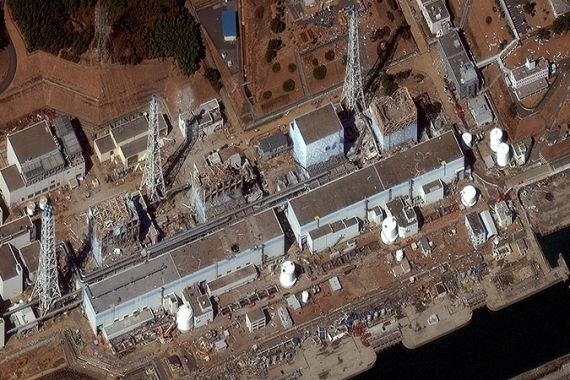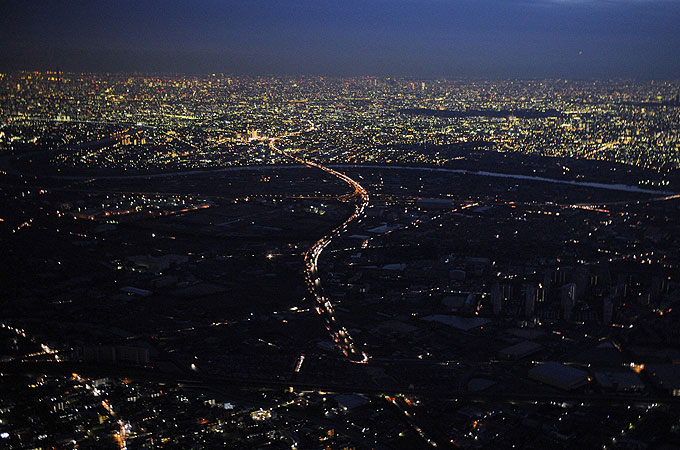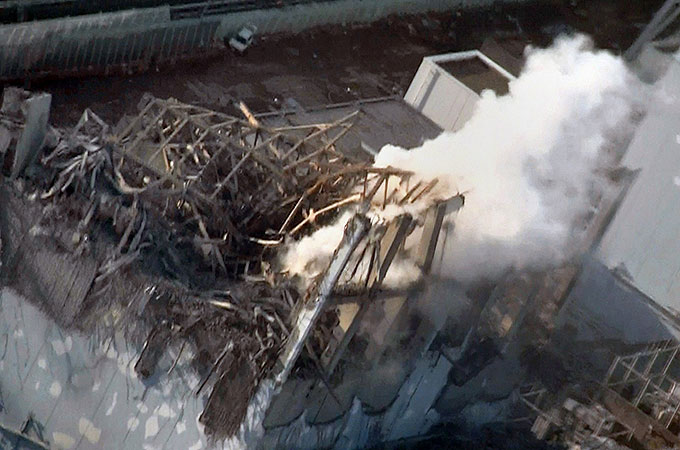Japan races to restart water pumps
Engineers rush to establish external electricity supply to activate cooling system at crippled nuclear complex.

 |
|
The earthquake and tsunami in northern Japan knocked out supply from a nuclear power plant [Reuters/Kyodo] |
Engineers have attached a power cable to the outside of Japan’s tsunami-crippled nuclear plant in a race to prevent deadly radiation from an accident now rated at least as bad as America’s Three Mile Island incident in 1979.
“TEPCO has connected the external transmission line with the receiving point of the plant and confirmed that electricity can be supplied,” the plant’s operator Tokyo Electric Power Co (TEPCO) said in a statement on Saturday.
Keep reading
list of 4 itemsCould shipping containers be the answer to Ghana’s housing crisis?
Thousands protest against over-tourism in Spain’s Canary Islands
Holding Up the Sky: Saving the Indigenous Yanomami tribe in Brazil’s Amazon
Further cabling inside was under way before an attempt to restart water pumps needed to cool overheated nuclear fuel rods at the six-reactor Fukushima plant in northeastern Japan, 240 km north of Tokyo.
Working inside a 20 km evacuation zone at Fukushima, nearly 300 engineers were focused on trying to find a solution by restoring power to pumps in four of the reactors.
Another 1,480 metres of cable are being laid inside the complex before engineers try to crank up the coolers at reactor No 2, followed by numbers 1, 3 and 4 this weekend, company officials said.
Options to consider
If that works it will be a turning point.
|
Al Jazeera’s Steve Chao reports on the problems facing the delivery of aid relief to disaster zones |
“If they are successful in getting the cooling infrastructure up and running, that will be a significant step forward in establishing stability,” said Eric Moore, a nuclear power expert at US-based FocalPoint Consulting Group.
If not, there is an option of last resort under consideration to bury the sprawling 40-year-old plant in sand and concrete to prevent a catastrophic radiation release.
That method was used to seal huge leakages from the 1986 Chernobyl disaster.
Underlining authorities’ desperation, fire trucks sprayed water overnight in a crude tactic to cool reactor No 3, considered the most critical because of its use of mixed oxides, or mox, containing both uranium and highly toxic plutonium.
Japan has raised the severity rating of the nuclear crisis to level 5 from 4 on the seven-level INES international scale, putting it on a par with the Three Mile Island accident in 1979, although some experts say it is more serious.
Chernobyl, in Ukraine, was a 7 on that scale. This also comes as the UN calls Japan’s efforts to avert an atomic crisis a “race against time”.
The crisis has also prompted Japan’s prime minister to call on the opposition to join a “grand coalition” aimed at handling reconstruction policy.
Before the disaster hit, opposition parties were pressing Naoto Kan to call a snap election by refusing to help enact vital budget bills, while rivals in Kan’s own party were plotting to force their unpopular leader to quit to improve their fortunes.
Kan told a news conference on Friday that he was considering “strengthening the cabinet”, without giving any details, but local media has said this included the idea of increasing the number of cabinet ministers to 20 from the current 17 and creating some new posts to handle reconstruction.
Plight of tsunami survivors
Meanwhile, the operation to avert large-scale radiation has overshadowed the humanitarian aftermath of the 9.0-magnitude quake and 10-metre tsunami that struck on March 11.
 |
| Japan has been battling to prevent a meltdown at the Fukushima nuclear power plant [AFP/Jiji Press] |
Nearly 7,000 people have been confirmed killed in the double natural disaster, which turned whole towns into waterlogged and debris-shrouded wastelands.
Another 10,700 people are missing with many feared dead.
Some 400,000 people, including many among Japan’s ageing population, are homeless. Their plight worsened following a cold snap that brought heavy snow to the worst-affected areas..
Food, water, medicine and heating fuel are in short supply.
Nearly 290,000 households in the north were still without electricity, officials said, and the government said about 940,000 households lacked running water.
Aid groups say most victims are getting help, but there are pockets of acute suffering.
“We’ve seen children suffering with the cold, and lacking really basic items like food and clean water,” Stephen McDonald of Save the Children said in a statement on Friday.